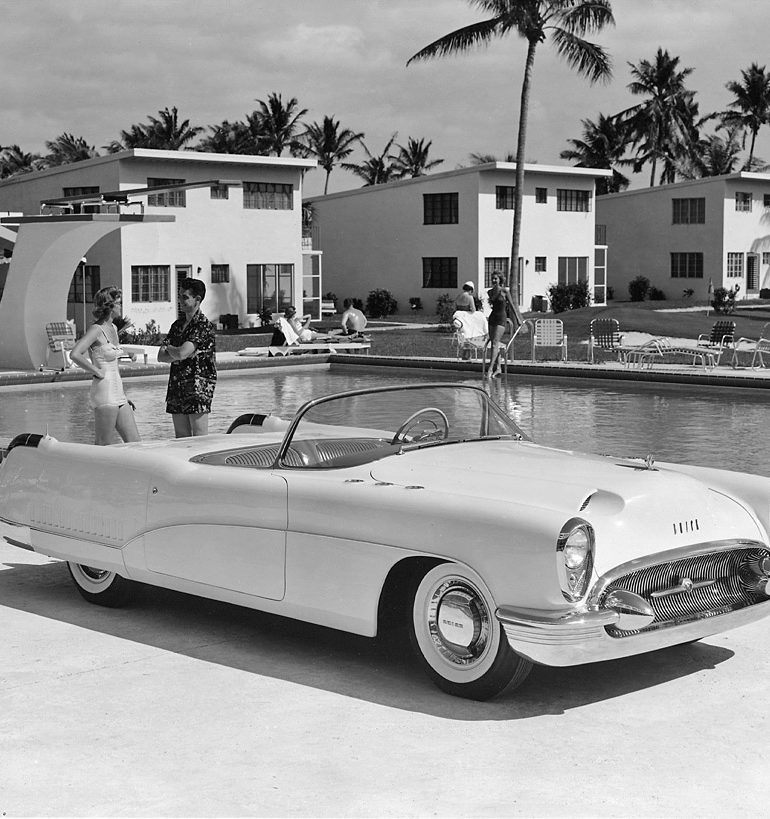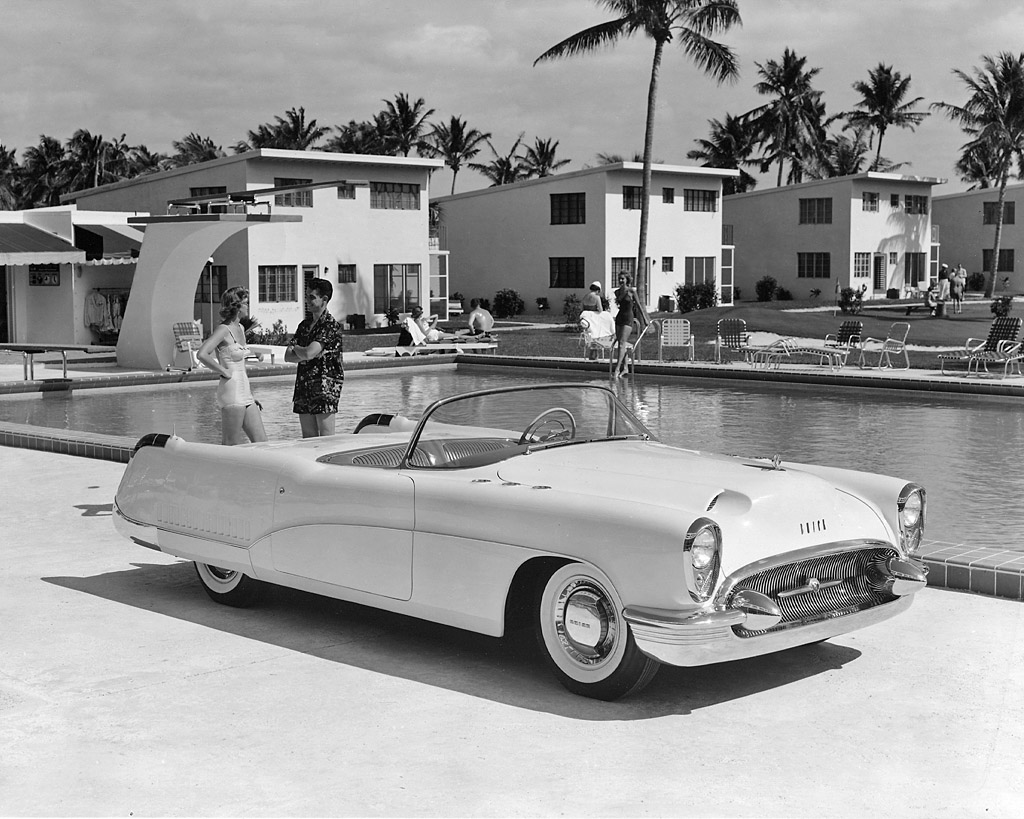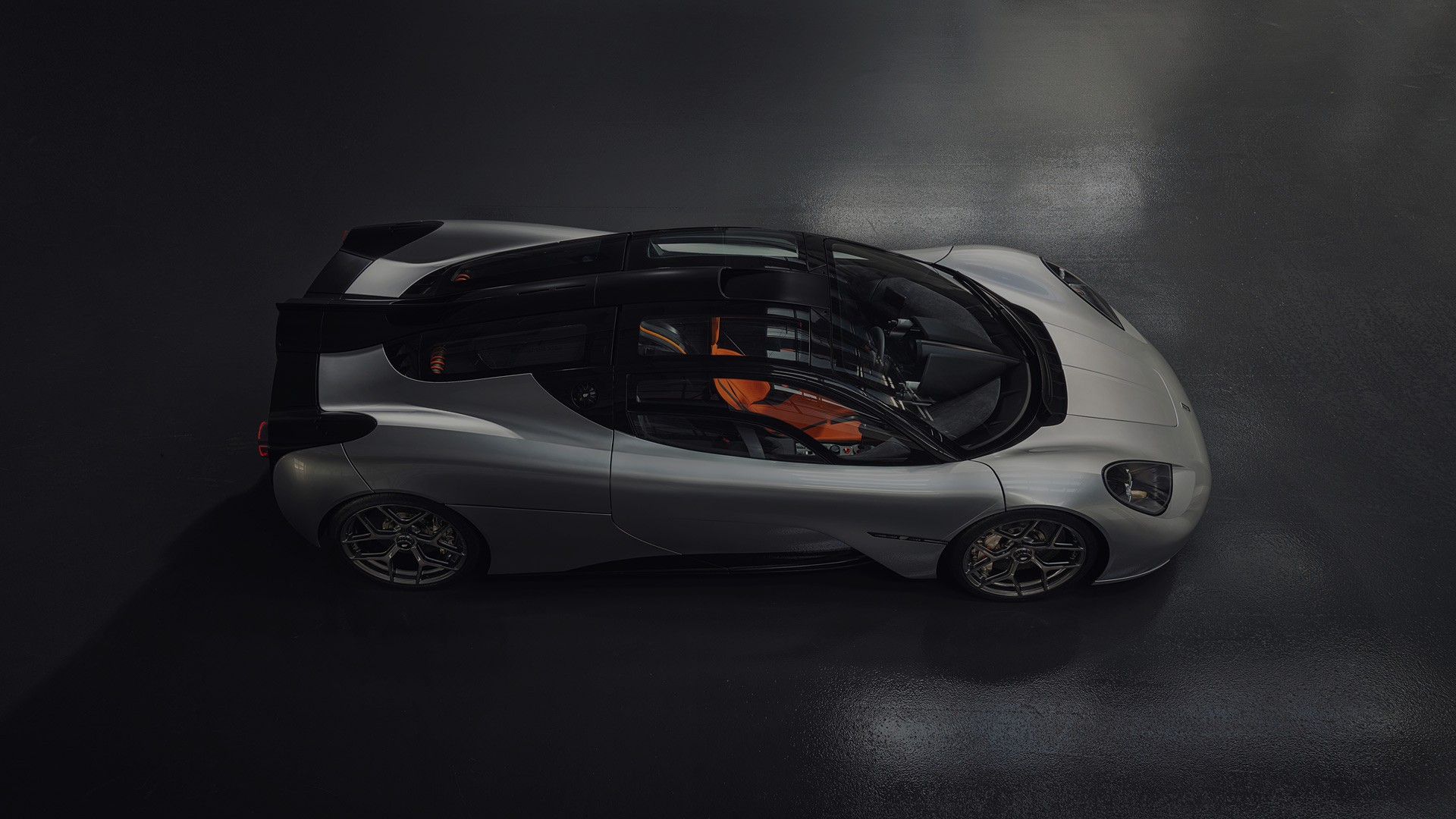1953 Buick Wildcat I
Built as first of two concept cars, the Wildcat was a boulevard cruiser showcasing GM’s new drive-line developments.
A highlight of the Wildcat was its pioneering Fibreglas body. The same technology was used later in the year to develop the first 1953 Corvette.
Stylistic features of the Wildcat included a huge front grill with buffer bomb guards, prominent rear tail fins with build-in lights and a wrap-around front windshield.
The Wildcat showcased GM’s new Fireball 215 cu.in. V8 that could produce up 188 bhp. This all-aluminum engine turned out to be useful during the fuel crisis of 1956 and was later sold to Rover. In the concept car, this was mated to a new version of GM’s torque converter called the Twin Turbine Dynaflow Drive.
A unique feature of the car was its front hubcaps which incorporated a technology called ‘roto-static brake cooling discs’. These used a cooling duct on the wheel that remained stationary to provide a fresh flow of air to the front brakes.
In 1954, a Wildcat II sports car concept was released as a possible companion to the Corvette. A second series of GM concept cars also adopted the Wildcat name in the mid eighties.
1953 Buick Wildcat I Gallery
See full 1953 Buick Wildcat I Gallery here
In Detail
| type | Concept / Prototype Car |
| engine | Fireball V8 |
| position | Front Longitudinal |
| aspiration | Natural |
| block material | Aluminum |
| fuel feed | 4-Barrel Rochester |
| displacement | 3523 cc / 215 in³ |
| power | 140.2 kw / 188 bhp @ 4400 rpm |
| specific output | 53.36 bhp per litre |
| torque | 284.7 nm / 210 ft lbs @ 2800 rpm |
| body / frame | Fibreglas over Steel Chassis |
| driven wheels | RWD |
| tran clutch | Twin Turbine Dynaflow Torque Converter |





